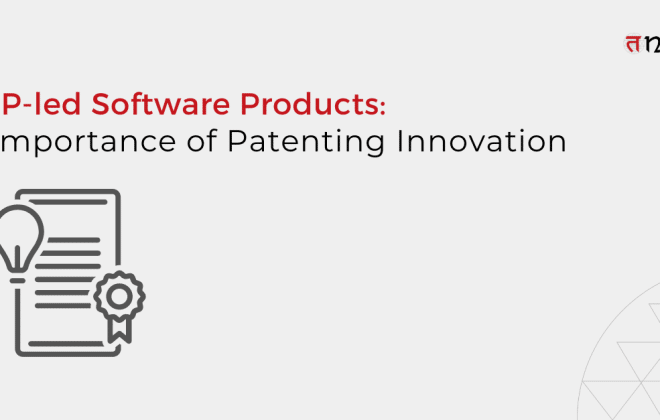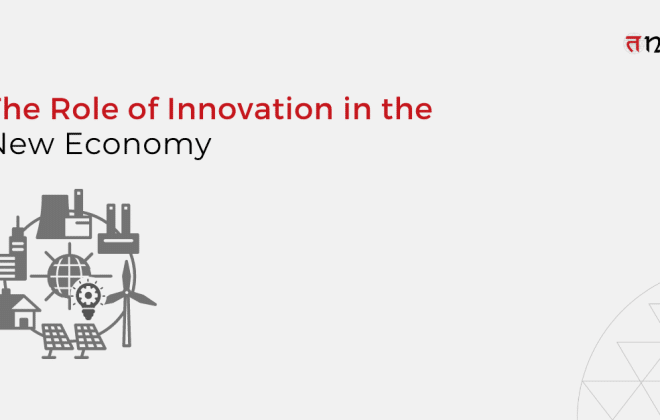
Tntra’s Expert Insights: Developing an Efficient Workflow Management System for Businesses
In the current business environment, an effective workflow management system is essential. The blog promotes adopting a user-centric, streamlined workflow management system, stressing the necessity of changing to automation. It covers essential subjects like careful prioritization, adherence to industry standards, and the tactical application of digital transformation services. Working together and forming partnerships with top engineering services in the industry, such as Tntra, guarantees smooth integration, boosting operational efficiency and productivity across various business ecosystems.
A leading manufacturing company in Japan suffered from a lack of a centralized workflow management system. At the time, receiving and fulfilling orders for parts at the molding factory relied on manual handling. Orders from customers were received as Excel files and then uploaded to a standalone software for workflow status and molding process forms. This method was affected by inefficiencies, errors, lack of transparency, real-time monitoring, and inter-departmental coordination.
More specifically, the company struggled with inefficient production process management, manual data entry, and the lack of a unified workflow system. Due to the manual processing of Excel files, a lack of transparency, problems with collaboration, and insufficient real-time visibility for management, they experienced errors and delays in order fulfillment. Moreover, data-driven decision-making was hampered by the lack of reporting tools.
The lack of a centralized workflow management solution presented difficulties for the manufacturing company. Manual handling was used at their molding factory to receive and process part orders. Orders from customers were delivered as Excel files, which were then imported into different programs to monitor the molding and processing procedures. This strategy resulted in mistakes, inefficiencies, and problems with interdepartmental collaboration, transparency, and real-time monitoring.
To help the manufacturer, Tntra, an IP-led software product engineering company, developed a solution that enhanced their efficiency, significantly reduced cost, improved inter-departmental cooperation, provided real-time visibility and provided data-driven decision-making capabilities.
Tntra created a top workflow management solution that completely changed how molding factories place parts orders. Order receipt and fulfillment were automated using the workflow management system, eliminating human entry to reduce errors and save time. This software allowed managers to see real-time information, facilitating prompt issue resolution and avoiding delays. Its reporting technologies enabled smart data visualization and easily configurable reports.
Inspired by the Kanban system, our dynamic workflow engine facilitated easy task assignment and rule-based updates. Facilitating effective teamwork, the integrated collaboration tools simplified communication between departments. Furthermore, a well-organized and readily available robust document management system guarantees work schedules and instructions with version control.
The audit trail of the workflow management software system maintained transparency and accountability while quickly rectifying inefficiencies. The results were astounding: shorter lead times, fewer mistakes, significant cost savings via automation, and shorter delays. Productivity was boosted by better teamwork and communication, while compliance and decision-making were enhanced by real-time tracking. With thorough audit trails and an analytics-driven approach, the manufacturer and Tntra cultivated accountability and industry-standard adherence through informed operations.
Source: Tntra
Transforming Operations with a Leading Workflow Management Solution
The workflow management systems market was valued at USD 14,526.47 million globally in 2021. It is expected to increase at a compound annual growth rate (CAGR) of 26.17% to reach USD 58,600.12 million by 2027.
Businesses are moving towards business process automation because 68% of workers feel overburdened by their everyday duties. Without automation, these workers might be pushed beyond their breaking point. Additionally, there is a growing need for automation solutions because 94% of businesses do time-consuming, repetitive processes. Notably, automation has increased productivity for 66% of knowledge workers and improved job satisfaction for 90%. This emphasizes the importance of a leading top workflow management digital solution.
Currently, 36% of businesses automate workflows with business process management software, and 50% of business executives plan to automate even more repetitive jobs. This change has significantly improved operational effectiveness and customer happiness. A
McKinsey poll found that respondents are three times more likely to use digital platforms for 80% of their customer contacts. Automated recommendations are the go-to source for 60% of customer care representatives for the best course of action.
The workforce views automation favorably; 86% think it increases their productivity at work, and 65% think technology will lead to better career opportunities. Approximately 51% of firms use automation tactics primarily to increase overall efficiency. Additionally, Workflow management automation systems help save time by 10-50%, as suggested by 73% of IT leaders.
According to another study, 76% of companies use automation to standardize their regular activities. Furthermore, 58% use automation for planning, reporting, and data management, and 36% use it especially for regulatory compliance. Remarkably, smaller businesses have better success rates regarding workflow automation, even if they embrace it later than larger organizations—65% of smaller businesses report favorable outcomes against 55% of larger businesses. Additionally, 62% of companies find three or more significant inefficiencies or bottlenecks in their operational processes, which may be aided by effective digital transformation solutions.
What Does a Successful Workflow Management Look Like, and How Can Tntra Help to Implement It?
What is a Successful Workflow Management Solution?
A workflow management system should be designed to minimize the complexity of requesting and delivering information. The best workflow management solutions are designed with the following attributes in consideration –
- User-Centric
The first step in creating a strong workflow management system architecture is paying attention to the needs of end users. The workflow should strategically address the pain points of both external customers and internal business process users. Identifying jobs and processes that can be simplified is essential to designing it.
- Better Productivity
A productive workflow is quantifiable as well as conceptual. Monitoring metrics and key performance indicators (KPIs) is crucial for measuring gains in productivity. For example, related KPIs in a banking process could monitor transaction quantities such as money deposits, providing observable progress indicators.
- Simple and Clear
Simplicity and clarity play pivotal roles in the effectiveness of any workflow, especially when considering digital transformation services. Ensuring a well-defined, straightforward flow of procedures guarantees end users’ ease of understanding and awareness. It’s essential to avoid confusion, emphasizing the importance of consistently aligning with the end user’s perspective, a crucial aspect of digital transformation services.
- Maintaining the Flow of Information
Within the workflow, the information flow should be prompt and effective. It should simplify transferring relevant data, streamlining the request and delivery procedures.
Implementing a Workflow Management System
Tntra can help you to implement a workflow management system in your organization, follow these steps:
- Identify Processes/Steps to Include in the Workflow
Start by determining which process steps must be included in the workflow. This first stage establishes the foundation and provides a precise guide to help you create your workflow.
- Mapping with Use Cases
Align your workflow with similar use cases. Analyze industry norms and look for similarities in the sector and among competitors. Utilizing other businesses’ existing workflows makes optimizing and implementing generally recognized best practices for your use case easier.
- Looking at Budget and Time
Budget and implementation schedule projections are critical after scoping is finished. These requirements play a crucial role in establishing if implementing the workflow is necessary and feasible. This assessment is crucial for determining whether integrating the workflow is feasible and relevant, particularly when looking at workflow management solution providers.
- Prioritization Steps
Setting priorities comes next after the procedures have been divided into steps. This tactical move aids in establishing the order in which various workflow segments are constructed, distinguishing between components built first and those postponed in the process.
Unlock efficiency with Tntra’s Workflow Management Solution. Read the case study now for transformative insights!
Conclusion
In today’s competitive landscape, efficient workflow management isn’t just a choice but a necessity for organizational success. Optimized with user-centric design and streamlined information flow, an effective workflow management system leads to heightened productivity and customer satisfaction.
Tntra is an experienced workflow management solution provider that has championed the integration of robust workflows. Tntra empowers businesses to transform their operations seamlessly and thrive in the digital era by understanding and addressing end-user needs, optimizing processes, and leveraging industry standards.
If you are looking for a software product engineering solutions provider that has the capability to design and implement custom workflow management solutions, contact Tntra today!!




